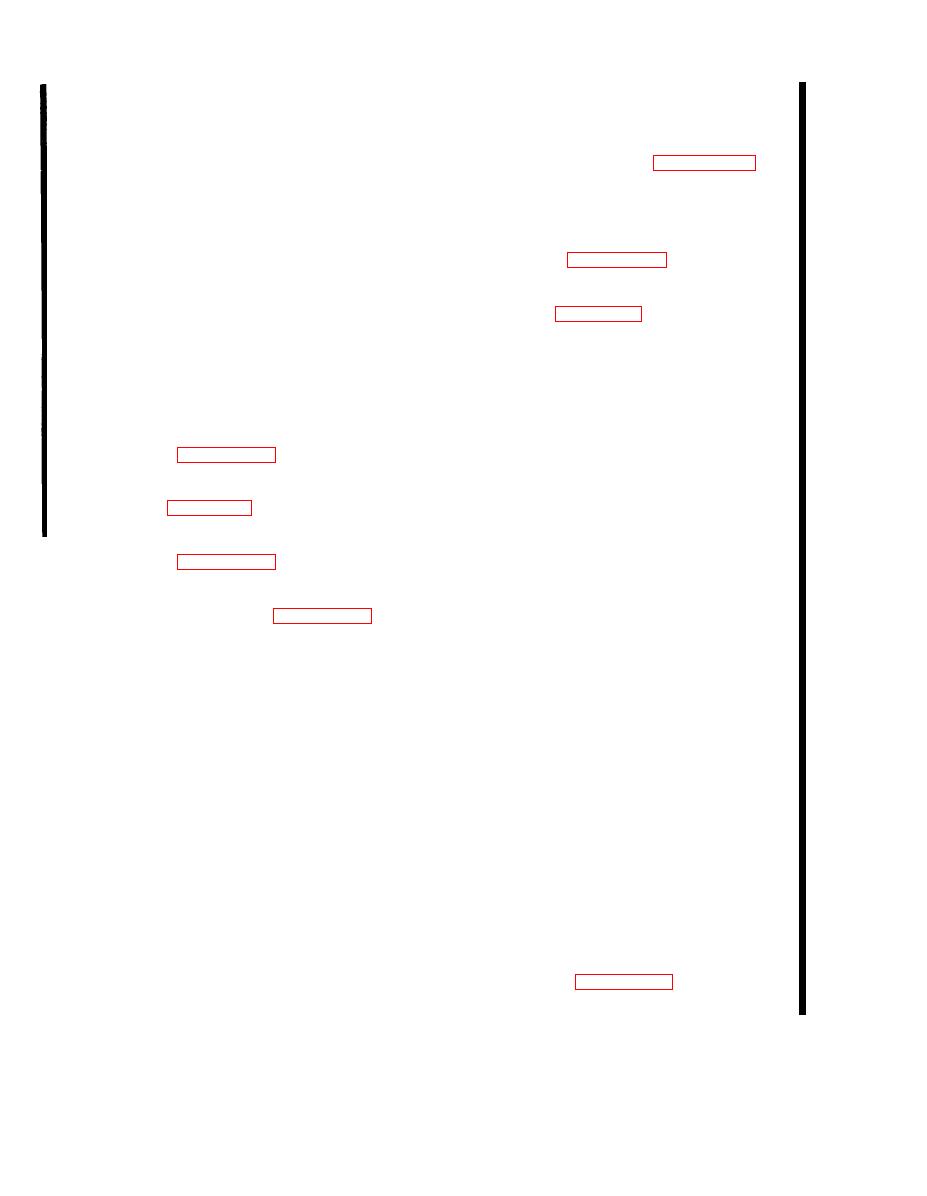
TM 5-4610-218-34
5-5. Chemical Solution Feeder (Raider Model
(7) Replace all unserviceable parts. Replace
only).
all O-rings.
a. General. The chemical solution feeder
e. Reassembly.
Refer to figure 5-26 and
assembly consists of two diaphragm pumps and
reassemble the chemical feeder main housing.
attaching hoses. Both pumps are powered by a
single electric motor that transmits power through
f. Checkout and Adjustment, and installation
a worm gear on the motor output shaft to the
internal drive shaft assembly. Built onto the drive
shaft is a set of cam lobes that impart the
(1) Refer to figure 5-25 and install the
reciprocating motion required to operate the
diaphragm pumps.
diaphragm pumps. Rotating the control knobs
increases or decreases the stroke (output) of the
(2) Refer to figure 5-25 and install the feeder
respective diaphragm pump by limiting the return
motor.
stroke of the actuating shafts. Both diaphragm
pumps can be adjusted individually without
(3) To simulate conditions of the installed
stopping the unit.
chemical solution feeder, position two
containers of clean fresh water below
b. Removal.
feeder pump. F e e d e r height above
containers must be the same as the
(1) Refer to figure 5-24 and remove the
installed unit.
chemical solution feeder.
(4) Connect plastic hoses to outlet (top) and
(2) Refer to figure 5-25 and remove the feeder
inlet (bottom) hose connectors on
motor.
diaphragm pumps. Place inlet hoses in
water filled containers. Place outlet hoses
(3) Refer to figure 5-25 and remove the
into empty containers.
diaphragm pumps.
(5) Apply electrical power to feeder motor.
disassemble the chemical feeder main housing.
(6) Rotate control knobs to 100 PERCENT
STROKE and allow feeder to prime (water
d. Clean, Inspect and Repair.
will flow from outlet hoses).
(1) Clean all components using dry cleaning
(7) S l o w l y rotate control knobs to 0
solvent P-D-680.
PERCENT STROKE until water flow
stops, then tighten thumbscrews.
(2) Inspect main housing for cracks, stripped
threads, and broken sight gage.
(8) Check position of 0 PERCENT STROKE
indication on control knob. The 0 must be
(3) Inspect drive assembly for worn or broken
positioned at the indicator pin. If index is
gear teeth, corroded, worn or frozen
not correctly alined, loosen control knot
bearings, and worn or damaged cam lobes.
setscrew and reposition control knob on
adjusting screw as required.
(4) Inspect for weak or broken return springs.
(9) Repeat steps (4), (5) and (6) until control
(5) Inspect actuating shafts for wear and
knobs indicate 0 PERCENT STROKE
damaged threads.
when water flow has stopped.
(6) Inspect all O-ring grooves on shaft,
(10) Refer to figure 5-24 and install the
a s s e m b l y f o r c r a c k s , w e a r , and
chemical solution feeder.
5-24 Change 2



